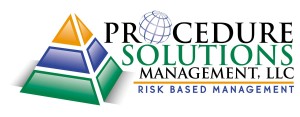
Effective communication lies at the heart of any successful organization, and in a remote work setting, its significance is amplified.
Since our inception in 2008, we’ve been a 100% remote company, witnessing firsthand how technology has transformed the landscape for remote work. While there may be a few challenges to communicating remotely, the past few years of prominent remote work have revolutionized how teams collaborate.
Effective communication lies at the heart of any successful organization, and in a remote work setting, its significance is amplified. Without face-to-face interactions, remote teams must rely on digital communication tools to bridge the gap. Clear and concise communication fosters trust, collaboration, and cohesion among team members, ultimately driving productivity and achieving shared goals. PSM’s communication evolution started with emails and phone calls. Today, we utilize many tools, such as Microsoft Teams, WebEx, Asana, and Zoom, but that only scratches the surface. Finding the right tools to communicate within your organization is key to productive and engaged employees.
Clear communication norms are essential for maintaining clarity and coherence within a remote team. Establish guidelines regarding preferred communication channels, response times, and expectations for availability. Additionally, defining meeting protocols, such as agendas and designated facilitators, helps streamline discussions and maximize efficiency. Setting recurring daily meetings amongst individual teams helps cultivate a sense of belonging and ownership, empowering individuals to contribute meaningfully to the team’s objectives.
Here are seven tips from Asana for effective communication in the workplace:
Know where to communicate and about what
Your company will likely have a diverse range of communication tools for instant messaging, emailing, face-to-face meetings, and project management. It’s essential to know which tools to use for certain situations. Ask your manager when it’s appropriate to communicate in real-time or send an asynchronous message.
At PSM, we use Microsoft Teams for instant messaging and face-to-face communication. We utilize Microsoft Outlook as our email platform for asynchronous messaging and communication outside our organization. We also use Asana as an assisted tool when we collaborate on projects.
Build collaboration skills
Communication goes hand-in-hand with collaboration. If you cannot communicate well, you will not collaborate well. This also means knowing how to disagree respectfully and come to a compromise. It’s important to have an inclusive team from different backgrounds, skill levels, and experiences to provide multiple unique perspectives.
Always practice having open and honest communication, even if it’s not always the easiest or most comfortable. Practicing open and honest communication will build a strong collaborative team.
Talk face-to-face when you can (including video chat)
Face-to-face conversation is the best way to avoid miscommunication. Sometimes, it is difficult to convey the correct tone through text. In-person or video chats allow each person to see expressions and body language. Face-to-face conversations are particularly important if you know you’re going to have a difficult conversation or discuss a topic that will require a thorough explanation.
If you work in a remote environment, it’s also suggested that you switch between phone calls and video chat if possible. Workers can experience videoconferencing fatigue if they’re in a string of video chats all day, resulting in lower productivity, forgetfulness, mental fatigue, and irritability. Phone calls also work because you can hear each other’s voice and tone, lowering the chance of miscommunication.

If you work in a remote environment, it’s also suggested that you switch between phone calls and video chat if possible. Workers can experience videoconferencing fatigue if they’re in a string of video chats all day, resulting in lower productivity, forgetfulness, mental fatigue, and irritability.
Watch your body language and tone of voice
Be aware of your body language when in person or in a video call. A tense demeanor, folded arms, and curt tone of voice may come off as angry or upset to your team members. If you’re feeling tired or stressed due to personal matters, leaving this out of your work is essential. Relax your body language and facial expressions to avoid giving off unintentional cues.
Prioritize two-way communication
According to Asana, “There are two common types of listening: listening to reply and listening to understand.” When communicating with a fellow team member, be conscious of how you listen and respond to them. If you’re missing key information from what they said or repeating what they told you, you’re listening to reply and not hearing what they say.
Listen to them without overthinking about how you’re going to reply. If you have an important thought you want to express when they’re finished talking, quickly jot it down and continue listening. To be a good communicator, you need to be a good listener.
Stick to facts, not stories
“Facts” are things that are true, and everyone in the room can agree they happened. “Stories” are an interpretation of the situation and should be validated before presenting as a fact.
If you’re unsure why a fellow team member made a particular decision, have an open and honest conversation with them to validate what happened. Interpreting their decisions and passing them off as facts to others can lead to unintended harmful consequences.
Make sure you’re speaking to the right person
Poor communication often occurs when information is not shared with the correct people or in the wrong setting.
Identify important project stockholders to ensure you are communicating with the correct people. If you’re unsure who to talk to about a specific aspect of your responsibilities, ask yourself, “Will the work I’m doing affect that person?” If the answer is yes, they are a project stakeholder and should be consulted with your project plans or questions.
Communication lies at the heart of successful remote work, serving as the linchpin that keeps teams connected and aligned. Remote teams can overcome challenges and thrive in a virtual environment by prioritizing effective communication, establishing clear norms, and embracing technology as an enabler. With intentionality, empathy, and adaptability, navigating the waves of communication in remote work becomes manageable and a catalyst for innovation and growth.




